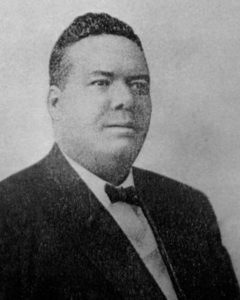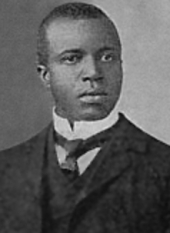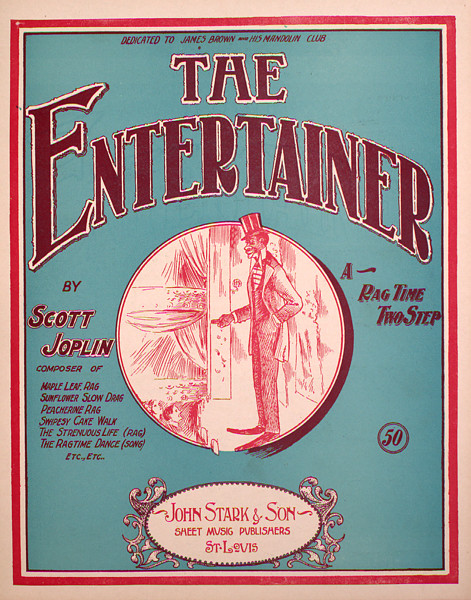And There Was Distant Music
The History of Ragtime
At the turn of the 20th century, America was a changing nation. As the previous century drew to a close, a new form of music called “ragtime” exploded in popularity. Ragtime drew inspiration from America’s troubled past, but also embodied the social change that was coming.
Ragtime music originated in the music of Black communities in the South after the Civil War. In the half century that followed the emancipation of Black Americans, this musical style traveled across the country, becoming one of the most popular styles from the 1880s to the 1910s. Ragtime’s newness, energy, and style made it wildly popular with young people of all races.
The name “ragtime” came from the displacement of the meter. At the time, it was common to note musical styles with the word “time,” such as waltzes being referred to as “in waltz-time.” Since the style of ragtime was break up the rhythm into short, syncopated beats, it was referred to as “in ragged time” which was eventually shortened to ragtime.
Syncopation in music is recognized by stressed or accented notes between the beat of the music, which interrupts the standard rhythm. This syncopation disrupts the flow of the melody and allows musicians to emphasize “weaker” notes outside the established melody. Ragtime music was especially exciting because it was unpredictable, and allowed musicians the freedom to improvise within songs, diversifying both rhythm and melody. The most common syncope in ragtime is influenced by the cakewalk, which was a high-stepping dance that originated in the Black community but had become a popular feature in minstrel show finales. Ragtime was in essence reclaiming that music for the Black community. Ragtime also draws from musical styles and beats derived from African drumming and from Afro-Caribbean dance rhythms.

Ragtime music example
Missouri was the heartland of ragtime. St. Louis had become a popular travelers’ stopping point for people going south or west. During the 1880s Black entrepreneurs found success in St. Louis, often opening saloons for travelers. The saloons would feature piano music for entertainment and the pianists would attempt to out-compete each other with more and more virtuoso piano compositions. Ragtime’s buoyant and rollicking sound was perfect for these environments. For example, ragtime composer Tom Turpin was a second-generation saloon owner in Missouri.

Tom Turpin
Ragtime spread quickly through the nation after it appeared at the 1893 Chicago World’s Fair. As ragtime music spread, it became a vehicle for Black performers to find success in popular entertainment. Scott Joplin, called the “King of Ragtime” rose to fame with songs such as “The Maple Leaf Rag” in 1899 and “The Entertainer” in 1902. Since ragtime piano music is technically difficult and requires exceptional skill to play, published compositions were never best sellers. Therefore, accomplished ragtime musicians were in steady demand.

Scott Joplin
While ragtime may have seen mainstream popularity beginning in the late 1800s, its roots and importance extend far beyond earlier than the years it was popular with white Americans. As Scott Joplin said in a 1913 interview with the Black newspaper New York Age, “ragtime music [has been] in America ever since the Negro race has been here, but the white people took no notice of it until about twenty years ago” in the 1890s.
While ragtime was popular with young people in dance halls, some critics claimed that the ragtime musical and dance styles were corrupting music and the morals of young people. While this is common for any new musical style, notably, these critiques were often racially tinged, calling ragtime primitive or simplistic despite the fact the music was technically complicated, difficult to play, and sophisticated. As one critic, Paul G. Carr, wrote:
“There is no element of intellectuality in the enjoyment of ragtime. It savors too much of the primeval conception of music, whose basis was a rhythm that appealed to the physical rather than to the mental senses.” – “Abuses of Music” (1901).
By the early 1900s ragtime was everywhere and the market was flooded by a slew of copycats. These hacks, often from Tin Pan Alley, diluted the original, more complicated form, to mass produce and take financial advantage of ragtime’s popularity. The oversaturation of this simplified ragtime may have contributed to its quick decline. However, ragtime’s technical complications also contributed to its decline because it could not be easily replicated and required immense skill. By the outbreak of World War I, ragtime had all but disappeared from the music scene, having been supplanted by another musical style by Black musicians that it inspired – jazz.

The Entertainer cover
Ragtime, especially the compositions of Scott Joplin, had a renaissance beginning in the 1970s. An album of Scott Joplin’s rags was a bestseller in 1970 and inspired two additional volumes. In 1972, Joplin’s ragtime-infused opera Treemonisha was revived and earned a special Pulitzer Prize in 1976. The 1974 move “The Sting” used Joplin’s music, even though the film was set in the 1930s, and Joplin’s The Entertainer” went to the top of the pop record charts. Finally, Joplin was honored with a postage stamp in 1983.
Just as ragtime gave music a new style and rhythm at the turn of the 20th century it is still be found today through the other music art forms it inspired. In addition to jazz, blues, “honky tonk” country music, swing and the boogie woogie big-band sound all pull musical elements from ragtime. The influence of ragtime cannot be measured, and cannot be defined by words – like all music, it must be heard to be truly appreciated.